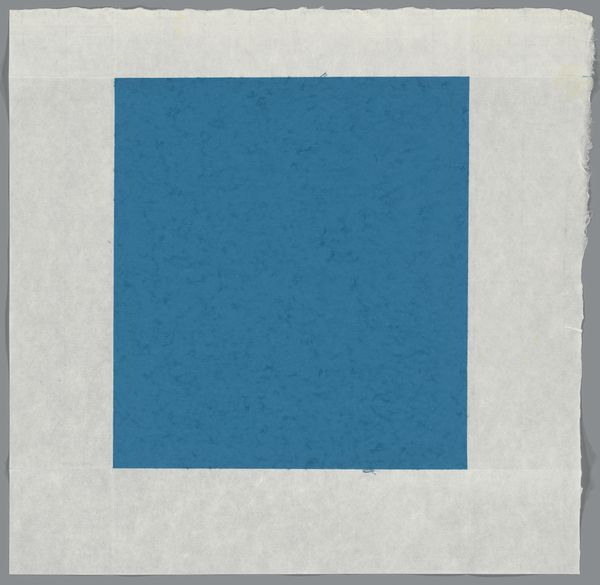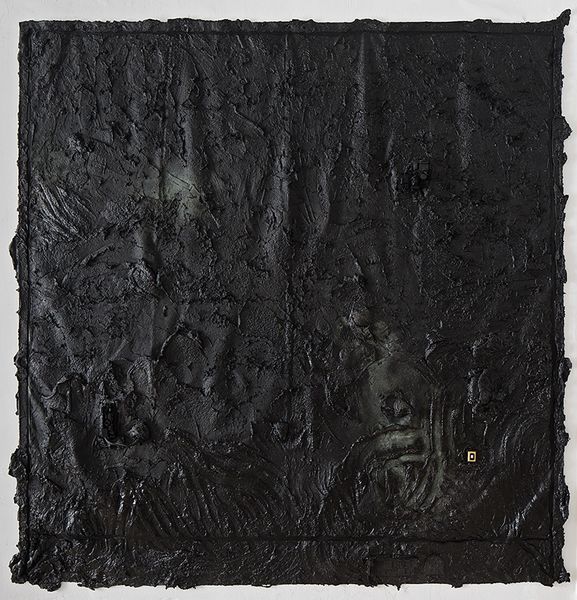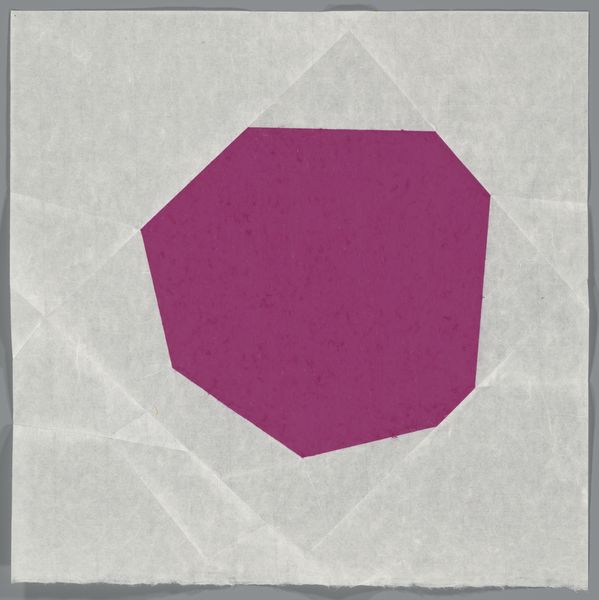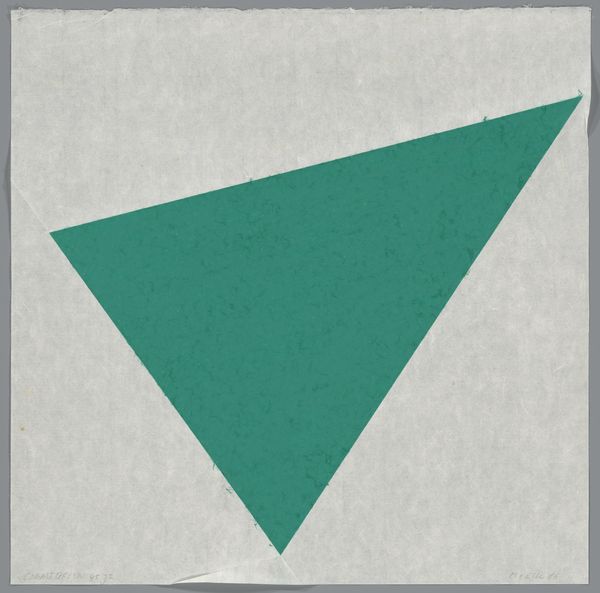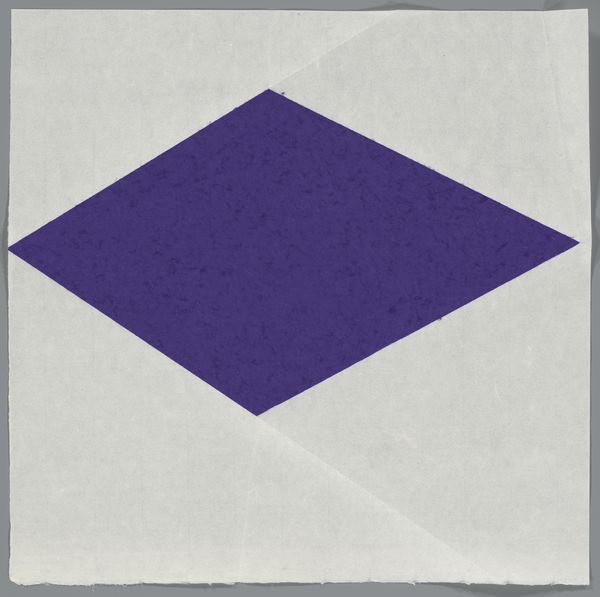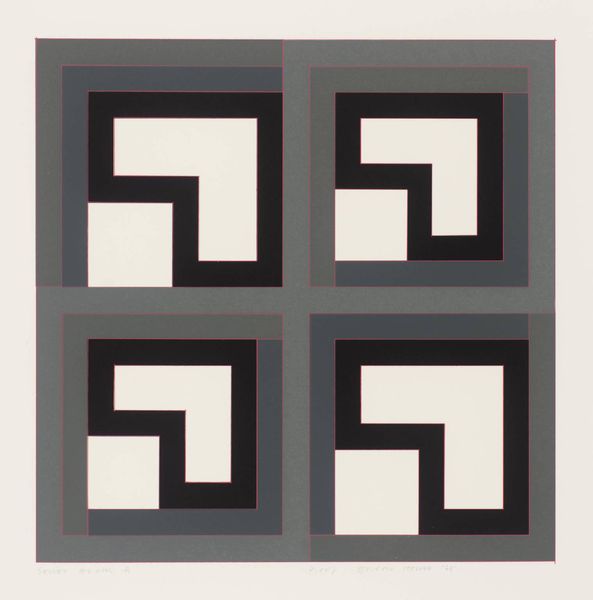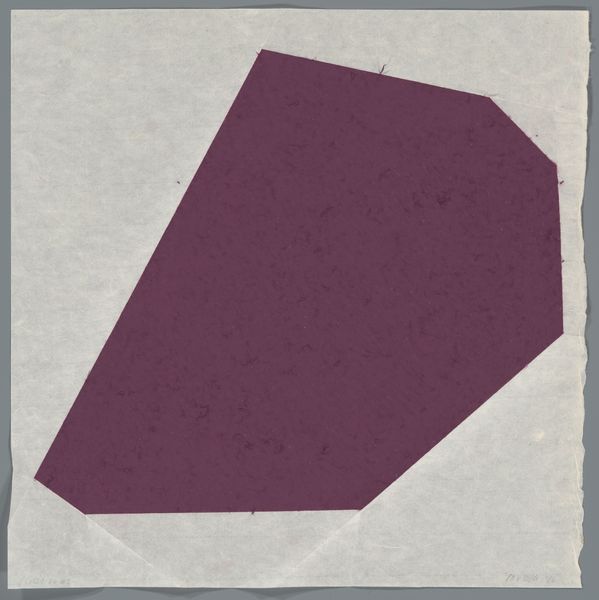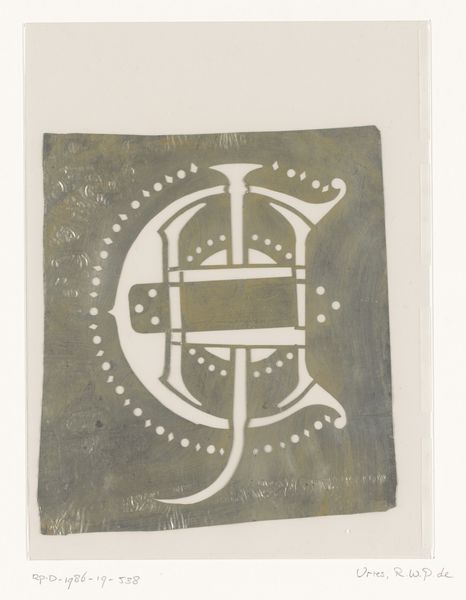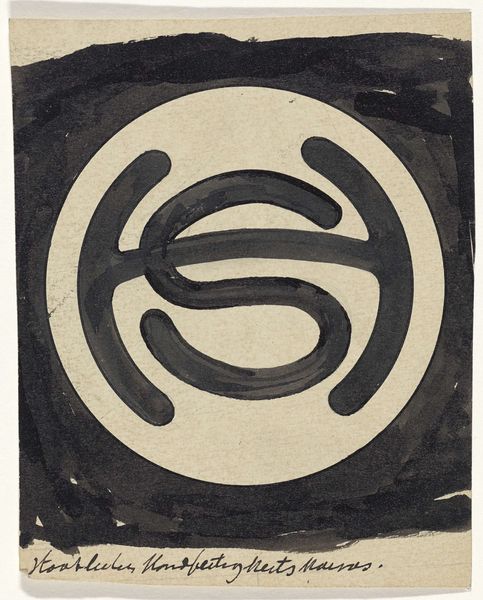
Dimensions: overall: 56.4 x 56.9 cm (22 3/16 x 22 3/8 in.)
Copyright: National Gallery of Art: CC0 1.0
Curator: Here we have Bruno Rousselot's "Delta," a drawing from 1994. Editor: Immediately, I'm struck by its sombre mood, the stark geometric forms layered almost haphazardly. There's a visual tension created by those weighty dark lines against the subtly textured ground. Curator: Rousselot's practice often blurred the lines between high art and craft. Considering this piece was created in 1994, near the peak of globalization, could the intersecting shapes represent global trade routes or even communication networks? The choice of a handmade drawing seems pointed. Editor: An interesting proposition! From a purely formal perspective, the success of "Delta" relies heavily on the interplay of positive and negative space. Note how those angular elements create a spiraling composition. The weight of the forms makes it a real object of presence in its austere character. Curator: Exactly, a sense of weight is generated by both form and its placement within the visual plane. However, thinking materially, this dark form probably did not materialize from nothing. There would be a socio-political or even industrial reason that made the production of this black material possible. Editor: Are you suggesting that the materials somehow inherently encode the economic conditions of their creation? While plausible, that might detract from the artist's conscious decisions about the shape and the surface that we're invited to behold. Curator: The surface and materials have everything to do with our perception of it. Perhaps Rousselot chose these dark and severe elements, reflecting a late 20th-century feeling of anxiety tied to labor and alienation. Editor: It could well be. Still, when I look at "Delta," it’s the spatial relationships that captivate me, how line and shape resolve into a self-contained system of pure form. The historical context might enrich that experience, but it isn't essential. Curator: Perhaps, but I am inclined to interpret the materiality of art. Even in "Delta," there are interesting clues on what kind of social-economic exchanges enabled its form, and how Rousselot, through abstraction, reflected on those exchanges in the era. Editor: A perspective worth considering. All art exists within overlapping networks of meanings—aesthetic and material. Thanks for drawing my attention to new layers that deepen its form.
Comments
No comments
Be the first to comment and join the conversation on the ultimate creative platform.
